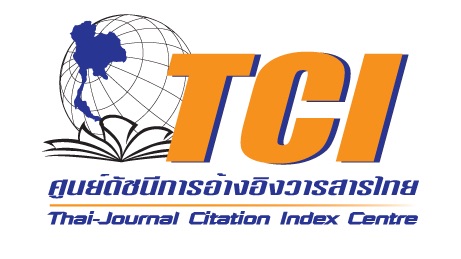The Effects of Mother-Language Interference and Commonly Used Textbooks on the Selection of Japanese Transitive and Intransitive Verbs in Thai Learners
Keywords:
Japanese Verb Pairs, Transitive, Intransitive, Language Acquisition, TextbookAbstract
The purposes of this study were to investigate factors that influence the selection of Japanese transitive and intransitive verbs and how those factors affect Thai students' acquisition of Japanese transitive and intransitive verbs. Due to the key of language learning, the effects of mother language and language instruction have been highly supportive and counter to language improvement. To support those keys of learning, this study applied questionnaires and textbook observations to investigate whether these factors influenced the selection of transitive and intransitive verbs. 53 participants in Thai Japanese studies completed all the questionnaires. The results revealed that Thai learners had a strong preference for transitive verbs over intransitive verbs. Moreover, one of the important factors also found was that the impact of Japanese textbooks highly affected the selection of particular types of verbs. This study looked at Japanese textbooks that were commonly used in Thailand. The results showed that transitive verbs were found more frequently than intransitive verbs. According to these results, the extensive introduction of a certain type of verb from the mother language effects and Japanese textbooks influence the selected Japanese verb type.
References
Goldberg, A. E. (2003). Constructions: a new theoretical approach to language. Trends in Cognitive Sciences, 7(5), 219-224.
Benati, A. (2019). The Role of Instruction: An Update. Language Teaching Research Quarterly, 11, 11-19.
Anderson, J. R. (2009). Cognitive Psychology and Its Implications (7th ed.). New York: Worth Publishers.
Rose, H. & Carson, L. (2014). Chinese and Japanese language learning and foreign language education in Japan and China: Some international perspectives. Language Learning in Higher Education, 4(2), 257-269.
Jongsutjarittam, P., Skulkru, P. & Sattayapong, S. (2004). Basic Japanese Language Education in Thailand. The Japan Foundation Bangkok, 1, 115-140.
Johnston, J. (2005). Factors that Influence Language Development. Encyclopedia on Early Childhood Development.
Bardovi-Harlig, K. (1999). Exploring the Interlanguage of Interlanguage Pragmatics: A Research Agenda for Acquisitional Pragmatics. A Journal of Research in Language Studies, 49(4), 677-713.
Nilsson, M. (2006). Positive and Negative aspects. Textbooks and Alternative material.
Makiko, M. (2004). The Acquisition of Japanese Intransitive and Transitive Paired Verbs by English-Speaking Learners: Case Study at the Australian National University. 「世界の日本語教育」, 14, 167-192.
Nishi, Y. & Shirai, Y. (2008). Verb learning and the acquisition of aspect: L1 transfer of verb semantics. Linguistic Approaches to Bilingualism, 11, 1-46.
Saelim, P. (2015). Factors influencing the selection of transitive and intransitive verbs. 日本語教育方法研 究会誌, 22(2), 76-77.
Kaewkitsadang, P. & Srisattarat, S. (2012). A Study of the Problems of Japanese Language Education in Thai High Schools. Japanese Studies Journal Special Issue, 29, 110-117.
Sangthongsuk, H. (2006). A Survey on the Use of ‘Akiko to Tomodachi’ in High Schools. The Japan Foundation Bangkok, 3, 181-183.
Chawenkijwanich, S. (2008). Problems on Acquisition of Japanese transitive and intransitive verbs by Thai students of Japanese. Journal of Liberal arts, 8(1), 79-108.
Shimada, T. & Kordoni, V. (2003). Japanese “Verbal Noun and suru” Constructions. Proceedings of the workshop on Multi-Verb constructions Trondheim Summer School 2003.
Downloads
Published
How to Cite
Issue
Section
License

This work is licensed under a Creative Commons Attribution-NonCommercial-NoDerivatives 4.0 International License.







